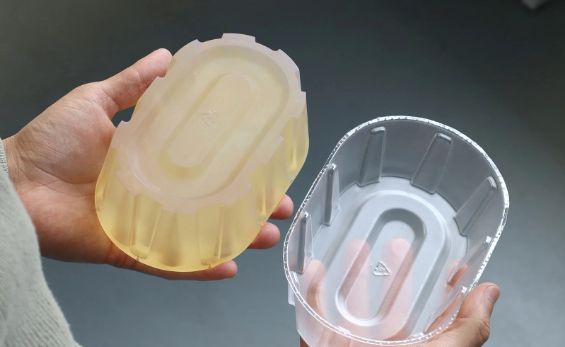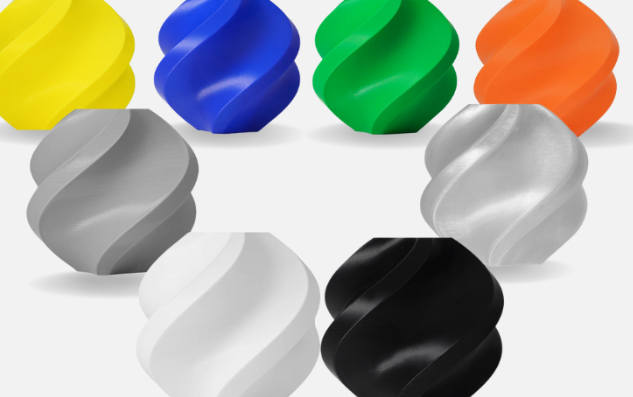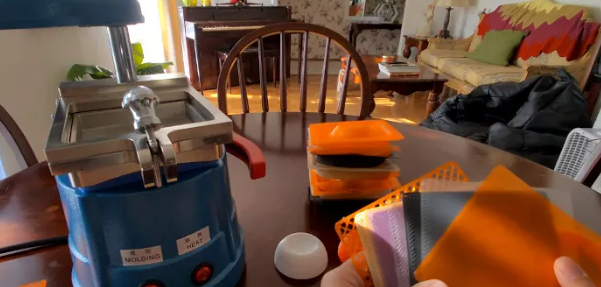PETG is excellent for vacuum forming, offering superb durability, clarity, and ease of processing at lower temperatures.

Introduction to PETG
PETG, or polyethylene terephthalate glycol, is a thermoplastic polymer that is gaining traction in various manufacturing sectors due to its impressive properties. Widely recognized for its versatility, PETG offers a unique combination of durability and ease of use, which makes it a preferred material for numerous applications.
Properties of PETG Material
- High Durability: PETG is resistant to impact and can withstand significant force without deforming, ensuring longevity in products.
- Excellent Clarity: The material’s clearness is comparable to that of acrylic and surpasses many other plastics, making it ideal for applications requiring transparency.
- Chemical Resistance: Withstands exposure to a wide range of chemicals, reducing the risk of damage in harsh environments.
- Ease of Fabrication: Can be cut, drilled, and bent with ease, which simplifies the manufacturing process.
Comparison with Other Thermoforming Plastics
- Against Acrylic: PETG is less brittle than acrylic and often outperforms it in impact resistance. However, acrylic might have a slight edge in scratch resistance.
- Versus Polycarbonate: While polycarbonate is stronger, PETG offers better chemical resistance and is easier to print on, making it more suitable for certain applications.
- Relative to ABS: PETG has a lower forming temperature, around 76°C to 82°C, compared to ABS which requires around 90°C to 100°C, thus it can be more energy-efficient and cost-effective in the vacuum forming process.
Fundamentals of Vacuum Forming
This process transforms a flat sheet of plastic into a contoured shape that can range from simple packaging trays to more complex automotive dashboards.
The Vacuum Forming Process
- Heating the Plastic: The process starts with heating the plastic sheet to its specific forming temperature. For PETG, this is usually between 76°C and 82°C, which allows the material to become pliable without melting.
- Applying the Vacuum: Once the sheet reaches the optimal temperature, a vacuum is applied between the mold and the plastic sheet, causing the sheet to conform to the mold.
- Cooling and Releasing: After forming, the plastic cools and solidifies into its new shape. Cooling systems can speed up this process, improving cycle times and throughput.
Materials Commonly Used in Vacuum Forming
- PETG: Known for its clarity and toughness, PETG is a prime choice for a wide range of applications, including those that require sterile environments.
- ABS (Acrylonitrile Butadiene Styrene): Offers good impact resistance and toughness, and it is suitable for a wide variety of uses.
- Polystyrene: Often used for products that do not require the strength of ABS, it is cost-effective and offers sharp detail.
Advantages of Using PETG for Vacuum Forming
PETG is a thermoplastic that offers several advantages for vacuum forming, making it a competitive choice for manufacturers who need a material that is not only easy to work with but also meets the demands of a wide variety of applications.
Durability and Impact Resistance
- Withstands Impact: PETG has a high impact resistance, meaning it can absorb shocks without cracking, which is crucial for items that are shipped or handled frequently.
- Long-Lasting: The material’s durability extends the life of the final product, potentially reducing the need for replacements and maintenance.
Clarity and Aesthetics
- Glass-like Appearance: PETG provides a clear, glass-like finish that is aesthetically pleasing and ideal for applications where visibility of the product is important.
- Customizable Surface Finish: Manufacturers can easily add textures or colors to PETG during the forming process, enhancing the visual appeal without compromising the material’s clarity.
In terms of numbers, PETG typically showcases an impact resistance that is significantly higher than that of many other thermoplastics, sometimes absorbing impacts with no breakage where other materials would fail. For example, its notched Izod impact strength can be as high as 1.7 ft-lb/in, which is substantial when compared to other common materials.

Technical Considerations
When working with PETG for vacuum forming, there are several technical aspects that manufacturers must carefully consider to ensure the quality and efficiency of the production process.
Temperature Requirements for PETG Forming
- Optimal Heating Range: PETG requires a precise heating range, typically between 76°C and 82°C, to achieve the right level of pliability without degrading the material.
- Consistent Heat Distribution: Ensuring uniform temperature across the sheet is critical to prevent thin spots or webbing during forming.
- Controlled Cooling: Manufacturers must cool PETG at a rate that prevents crystallization, which can cause haziness or brittleness.
Mold Design Considerations for PETG
- Draft Angles: Incorporating appropriate draft angles in the mold design helps prevent PETG parts from sticking and ensures a smooth release.
- Surface Finish of the Mold: A high-gloss finish on the mold can transfer to the PETG, enhancing the final product’s appearance.
- Undercuts and Detailing: PETG can capture fine details, but careful mold design is necessary to balance detail with the material’s ability to stretch.
Comparative Analysis
Understanding the strengths and limitations of various materials is critical for making informed decisions in the vacuum forming process.
PETG vs. ABS in Vacuum Forming
- Impact Resistance: PETG generally offers better impact resistance compared to ABS, which means it is less likely to crack or break upon impact.
- Thermal Characteristics: PETG can be formed at lower temperatures than ABS, often between 76°C and 82°C, whereas ABS requires between 90°C and 100°C. This can lead to energy savings and faster cycle times.
- Aesthetic Qualities: PETG has superior clarity, which is beneficial for applications requiring transparent materials, while ABS is known for its matte finish and is easier to paint.

PETG vs. Polycarbonate: A Detailed Comparison
- Strength and Durability: Polycarbonate is stronger and more heat resistant than PETG, but PETG has better chemical resistance, which can be crucial depending on the application.
- Cost Considerations: PETG is typically less expensive than polycarbonate, with the cost difference being as much as 20-30%. However, the final decision should also factor in the lifespan and performance requirements of the finished product.
- Ease of Use: PETG is easier to thermoform and does not require drying prior to forming, unlike polycarbonate, which can absorb moisture and may need pre-drying.
Case Studies: PETG in Action
PETG’s unique properties make it an attractive option for both industrial and consumer applications. These case studies showcase how PETG stands out in real-world applications due to its durability, clarity, and versatility.
Industrial Applications of PETG Vacuum Forming
- Medical Device Packaging: PETG is often used for blister packaging because of its clarity and sterility, which is crucial for medical equipment. It also withstands gamma radiation used for sterilization.
- Automotive Components: Due to its impact resistance and durability, PETG is suitable for forming durable, clear covers for lights and interior panels in vehicles.
Consumer Products Made with PETG
- Food Packaging: PETG’s FDA-compliant status makes it safe for direct food contact, and it is often used in forming clear food containers that are both durable and recyclable.
- Home Storage Solutions: Its impact resistance makes PETG an excellent choice for durable, see-through storage containers that can withstand daily use.
- Sporting Goods: PETG’s strength is beneficial for products like mouthguards, which require a clear material that can absorb impact without breaking.




